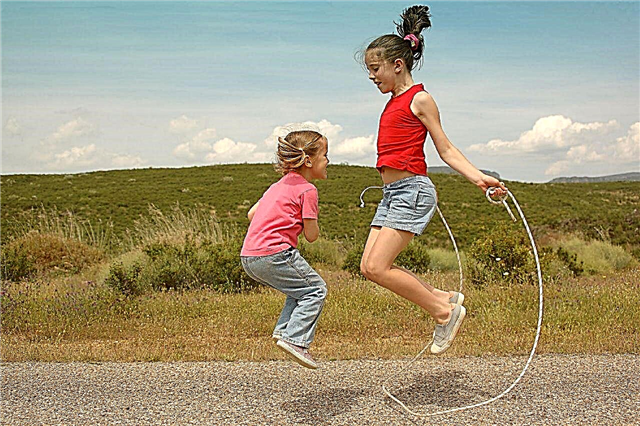
When the baby begins to give complementary foods, many mothers learn about the existence of such an interesting device called a nibbler. Other names for this item are “feeder”, “feeding net” (since the product is placed in a net), “fruit taker” (since it is often used to produce fruit).

Appointment
Basically, the nibbler is offered to babies to get acquainted with fruit complementary foods.
The crumb chews a piece of fruit placed in the net. As a result of chewing, a puree is obtained from the product, which the baby sucks out through the holes in the mesh. This is how your baby learns to chew solid complementary foods.
Note that it is convenient to take such a device with you for a walk, offering your baby a delicious fruit snack while riding in a stroller.
Using a fruit taker also helps during teething. While chewing the nibbler mesh, babies gently massage the gums, which reduces their discomfort from cutting teeth. In addition, you can put a chilled product in the net, which will give a slight freezing effect and ease the condition of the baby's gums.

A few words on safety
One of the advantages of the nibbler is the safe introduction of solid foods in childhood. Having given the product in the net, parents can rest assured that the baby does not bite off too large a piece of fruit. In addition, the use of a feeder excludes seeds and seeds from entering the child's mouth.
It is important to note that the mesh of the device is quite strong, and the plastic elements are shock-resistant. So you don't have to worry that the nibbler that falls to the floor will crack or the child will break the mesh with his teeth.
Types of nets for feeding
All niblers are divided into two types:


Why is silicone nibbler so popular?
The great demand for silicone devices among young mothers is associated with a large number of advantages of such nibbles over mesh ones:
- They keep their shape better.
- They do not change color when influenced by fruit juices.
- Food particles are not clogged in their holes.
- Babies love to suck them.
- Silicone can be treated with boiling water.

Manufacturers and model overview
Now on sale you can find several types of nibbles, since each manufacturer offers its own variation of the feeder.
Nuby
It is a well-known American manufacturer offering a rattle-style nibbler. Such a feeder has a rubberized bright plastic handle, which is quite convenient to hold in a child's handle. The nylon bag contains food in different volumes.

It was Nubi's niblers that appeared first on the Russian market and are quite common in pharmacies and stores. The advantages of such feeders include their pretty design, and the presence of models in pink and blue allows you to choose the right nibbler, taking into account the baby's gender.
As for the disadvantages of the nibbles of this brand, they include the rather high price of both the nibbler itself and replaceable nozzles for it, which have to be regularly replaced. In addition, for many children the comfortable and bright handle of such a thing can attract more than a product in a net.

MamaSense
The gadgets from this English manufacturer are called fruit takers. Their main feature is the material of manufacture, since the container is made of silicone. It holds its shape well, and through a large number of tiny holes from such a feeder, it is very easy for a child to get a complementary food product.
The handle is convenient both for gripping the baby's handle and for fixing to the highchair. It is very easy to wash such a silicone little thing, and the device dries out quite quickly. Due to the small volume of the mesh, it almost completely falls into the baby's mouth, and the contents are not splashed during chewing.

However, such a feeder also has its drawbacks - it is a rather high price, the absence of replaceable attachments (if the container is worn out, you will have to buy a new one), and also a small volume (complementary foods have to be given in small portions).
"The world of childhood"
Nibblers of this domestic manufacturer are made by analogy with Nuby products, but differ in some design features. The handle of such feeders is round and with a hole, so it can be either given to the baby in the handle or tied to a chair. The cost of such nets for feeding is quite affordable, and the design is convenient for the child and draws his attention to the container with food.
However, since the niblers of this manufacturer are not as common as the American ones, it is more difficult to acquire such a thing. In addition, in the process of chewing the product placed in the bag, the contents not only enter the baby's mouth, but also splash to the sides.

Mir Detstva also produces silicone nibbles, which are more convenient to use.

At what age to give?
Most often, the use of a feeder is resorted to with the beginning of the introduction of fruit complementary foods. Giving a baby, who has just had its first teeth, a large piece of apple or other product is quite dangerous. Although infants over 6 months of age already know how to swallow non-chopped foods, the risk of choking on a large bite is quite high.
Sometimes even a one-year-old baby still does not know how to chew a large piece of any product, so the most common age for using a nibbler is 6-18 months.
Instructions for use
Using the nibbler is quite simple - remove the fastening ring, put a piece of the product inside the net, close it tightly and give the device to the baby. Remember that the new mesh must be thoroughly washed using a detergent used for washing baby dishes. The use of other detergents is not permitted. The washed nibbler is thoroughly rinsed in boiled water.
The feeder should also be rinsed well after each use so that no food pieces remain in the net. For this, a toothbrush is often used. After rinsing, the disassembled device is left to dry completely, and if over time the mesh has darkened, it is replaced with a new one.

What products should I put in the feeder?
Most often, fruits and berries are placed in the feeder, such as slices of banana, pear or apple. In addition, with the help of such a device, the baby is often offered raw vegetables, as well as boiled vegetables. To eliminate the risk of choking on small pieces and crumbs from crackers, biscuits or bread, such products can also be placed in the nibbler.

Tips for choosing
- Inspect the fixture carefully from all sides. Pay attention to whether the fastener of the purchased nibbler is reliable so that the baby cannot open the device on its own. Make sure there are no defects in the mesh.
- Choose the mesh according to the age of the baby, and also check if the attachments can be replaced by attaching a different size to the nibbler. For silicone nibbler, the attachments may vary in width and length.
- If a cap is present in the nibbler, this will provide additional ease of use (you can take the little thing with you for a walk and on the road).
- Pay attention to the nibbles of a well-known manufacturer and ask the seller to show the quality certificate for the selected nibbler when buying. Cheaper counterparts from unknown companies can tear faster or be made of low-quality materials, so you should not risk the baby's health.

Is a silicone nibbler or mesh better?
To make a choice, you need to consider the following nuances:
- A nibbler with a mesh holds its shape worse than a silicone one.
- Pieces of the product that are given to the child remain in the holes of the mesh nibbler.
- If you give a baby from a net nibbler fruit, their juice will darken the net (it will turn gray-brown).
- The mesh is less hygienic as it is made of nylon, which cannot be boiled.
- It is much easier to wash the silicone tip, and if necessary, it can be boiled.
- Many babies like the silicone nibbler better, as it is more like a nipple, and it is more pleasant to suck it than to grind the net.

Reviews
You can hear very different opinions of women about feeders. Someone does not even know about the existence of such a thing, while someone is sure that this is a useless device. There are quite a lot of those who have a positive attitude to the feeding net, but do not class it as one of the things that cannot be done without during the introduction of solid food into the children's diet. At the same time, mothers who bought a nibbler for their babies are most often satisfied with such an aid.

How to make a nibbler with your own hands?
If there is no opportunity to buy a special ready-made mesh, it is quite realistic to use a homemade nibbler for complementary foods.
To make a nibbler, you need to take:
- A jar with a large lid that has a thread. An old jar of baby vitamins or other supplements is great.
- Nylon mesh. A clean laundry bag is a good option. You can also use the net part.
- A thick needle.
- A piece of paper and a measuring tape.
- Dense braid.
For the base of the future nibbler, cut a part from the jar so that you have a lid, and under it a few more centimeters of the jar. The resulting sharp edges must be carefully processed to eliminate the risk of cuts.

To make a mesh, you first need to create a pattern by measuring the circumference of the jar, dividing it in half and adding 1 cm of stock per seam. For example, with a jar circumference of 10 cm, the width of your mesh should be 6 cm (divide 10 by 2 and add 1). We select the length of the mesh ourselves from 7 to 10 cm.
After drawing a pattern on a piece of paper for the halves of the mesh, cut out two pieces from the mesh fabric and sew them with strong thread. It will not be superfluous to prepare several such nets at once. Then you can start making the handle. Heat a large needle and make two holes in the lid of the former jar. Pass the tape through them so that you get a loop that is comfortable to hold.
After inserting the mesh into the ring of a jar with a handle made of braid, screw the lid on and you have a hand-made feeder ready, which in practice will not yield to a purchased device.




